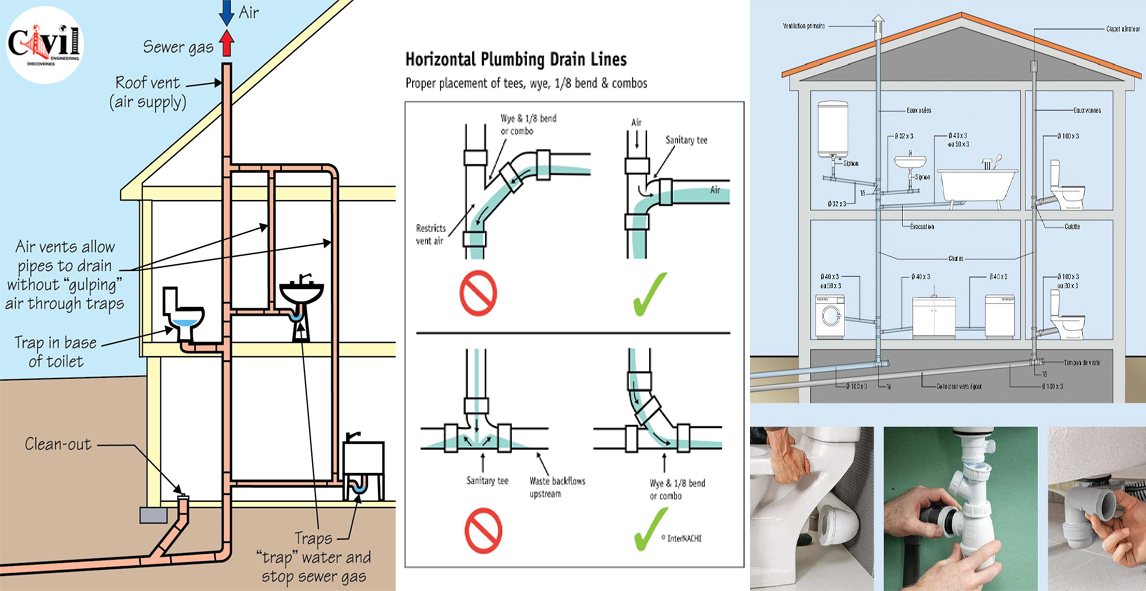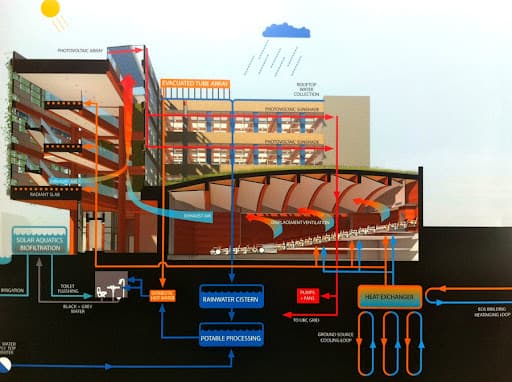Exploring The Layout of Your Property's Plumbing System
Exploring The Layout of Your Property's Plumbing System
Blog Article
How do you feel when it comes to The Inner Workings of Your Home's Plumbing?

Recognizing just how your home's pipes system functions is necessary for each house owner. From delivering clean water for alcohol consumption, food preparation, and showering to securely eliminating wastewater, a well-kept pipes system is critical for your family members's health and wellness and comfort. In this thorough overview, we'll discover the detailed network that comprises your home's pipes and deal pointers on upkeep, upgrades, and taking care of usual issues.
Intro
Your home's pipes system is greater than simply a network of pipelines; it's a complicated system that guarantees you have accessibility to clean water and effective wastewater removal. Knowing its components and how they work together can help you prevent costly repairs and ensure every little thing runs efficiently.
Standard Elements of a Pipes System
Pipes and Tubing
At the heart of your pipes system are the pipelines and tubes that bring water throughout your home. These can be made from different products such as copper, PVC, or PEX, each with its advantages in terms of resilience and cost-effectiveness.
Fixtures: Sinks, Toilets, Showers, and so on.
Components like sinks, bathrooms, showers, and tubs are where water is used in your house. Recognizing exactly how these fixtures connect to the pipes system aids in identifying problems and planning upgrades.
Shutoffs and Shut-off Points
Shutoffs regulate the flow of water in your plumbing system. Shut-off shutoffs are vital during emergencies or when you require to make repair services, enabling you to isolate parts of the system without interfering with water circulation to the entire house.
Water System
Main Water Line
The main water line attaches your home to the local supply of water or an exclusive well. It's where water enters your home and is dispersed to various components.
Water Meter and Stress Regulator
The water meter actions your water usage, while a stress regulator ensures that water moves at a safe stress throughout your home's plumbing system, preventing damages to pipes and components.
Cold Water vs. Hot Water Lines
Recognizing the difference between cold water lines, which provide water directly from the main, and warm water lines, which bring warmed water from the water heater, helps in fixing and planning for upgrades.
Water drainage System
Drain Pipes Pipeline and Traps
Drain pipelines carry wastewater far from sinks, showers, and bathrooms to the sewage system or sewage-disposal tank. Catches avoid drain gases from entering your home and additionally trap debris that can create clogs.
Ventilation Pipelines
Air flow pipes enable air right into the water drainage system, preventing suction that might slow down water drainage and cause traps to empty. Appropriate air flow is important for keeping the integrity of your plumbing system.
Importance of Proper Drain
Guaranteeing appropriate drain stops back-ups and water damages. Consistently cleansing drains and maintaining catches can protect against pricey repairs and prolong the life of your pipes system.
Water Furnace
Sorts Of Water Heaters
Water heaters can be tankless or conventional tank-style. Tankless heating units heat water on demand, while tanks keep heated water for prompt usage.
Just How Water Heaters Attach to the Pipes System
Understanding how water heaters connect to both the cold water supply and hot water distribution lines helps in diagnosing issues like insufficient warm water or leakages.
Upkeep Tips for Water Heaters
Regularly flushing your water heater to eliminate sediment, inspecting the temperature settings, and inspecting for leaks can prolong its life expectancy and enhance energy effectiveness.
Typical Pipes Concerns
Leakages and Their Causes
Leaks can occur due to aging pipelines, loosened installations, or high water pressure. Dealing with leaks promptly stops water damages and mold growth.
Clogs and Clogs
Obstructions in drains and toilets are usually brought on by purging non-flushable things or a build-up of oil and hair. Making use of drainpipe displays and being mindful of what goes down your drains can prevent clogs.
Signs of Pipes Troubles to Expect
Low tide pressure, slow drains, foul odors, or unusually high water costs are indicators of prospective pipes issues that ought to be dealt with without delay.
Pipes Maintenance Tips
Regular Inspections and Checks
Schedule yearly pipes assessments to catch issues early. Look for indicators of leakages, rust, or mineral accumulation in faucets and showerheads.
Do It Yourself Upkeep Tasks
Basic tasks like cleaning tap aerators, looking for bathroom leaks making use of color tablets, or shielding exposed pipelines in chilly environments can stop major pipes concerns.
When to Call an Expert Plumbing Professional
Know when a plumbing concern needs specialist competence. Attempting complicated repair services without proper understanding can lead to even more damage and higher fixing costs.
Updating Your Pipes System
Reasons for Updating
Upgrading to water-efficient components or replacing old pipes can boost water quality, lower water bills, and boost the worth of your home.
Modern Pipes Technologies and Their Benefits
Discover technologies like clever leak detectors, water-saving toilets, and energy-efficient water heaters that can conserve money and lower environmental influence.
Expense Factors To Consider and ROI
Determine the upfront expenses versus long-term cost savings when considering plumbing upgrades. Several upgrades pay for themselves via decreased energy bills and less repair work.
Ecological Impact and Preservation
Water-Saving Fixtures and Home Appliances
Installing low-flow faucets, showerheads, and commodes can considerably minimize water use without compromising efficiency.
Tips for Reducing Water Use
Simple practices like taking care of leakages promptly, taking shorter showers, and running complete loads of laundry and recipes can conserve water and lower your energy bills.
Eco-Friendly Plumbing Options
Take into consideration sustainable plumbing products like bamboo for flooring, which is durable and environmentally friendly, or recycled glass for counter tops.
Emergency situation Readiness
Steps to Take During a Pipes Emergency situation
Know where your shut-off valves are located and just how to switch off the supply of water in case of a ruptured pipeline or major leak.
Value of Having Emergency Situation Contacts Helpful
Maintain get in touch with details for neighborhood plumbing professionals or emergency situation solutions easily offered for fast action throughout a plumbing dilemma.
DIY Emergency Fixes (When Appropriate).
Short-term repairs like utilizing duct tape to patch a leaking pipe or positioning a pail under a trickling tap can lessen damages up until an expert plumbing technician shows up.
Final thought.
Comprehending the makeup of your home's pipes system encourages you to preserve it successfully, saving time and money on repairs. By adhering to normal upkeep routines and staying informed concerning modern-day pipes innovations, you can ensure your pipes system runs effectively for years to come.
Exploring Your Homes Plumbing Anatomy
Water Supply System
Main Water Line: This is where water enters your home from the municipal supply or a private well.
Water Meter: Typically located near where the main water line enters the property, it measures the amount of water used.
Shutoff Valve: It s crucial to know where this is in case of emergencies. It allows you to turn off the water supply to the entire house.
Pipes and Fittings: These distribute water throughout your home. Materials can include copper, PVC, or PEX.
Drain-Waste-Vent (DWV) System
Drains: Located in sinks, showers, and tubs, these carry wastewater away.
Traps: U-shaped pipes under sinks that hold standing water, blocking sewer gases from entering the home.
Vents: Pipes that lead from the DWV system to the outside, preventing vacuum formation and allowing gases to escape.
Sewer Line: Carries all wastewater from the home to the municipal sewer system or a septic tank.
Fixtures and Appliances
Sinks, Toilets, and Showers
Dishwashers and Washing Machines
Water Heaters
Maintenance Tips
Regularly check for leaks in exposed pipes and around fixtures.
Inspect the water heater annually for signs of wear.
Clean drains and traps to prevent clogs and odors.
Know how to shut off water to individual fixtures.
When to Call a Professional
Major leaks or burst pipes
Installation of new pipes or fixtures
Septic tank issues
Remodeling projects that involve plumbing changes
Conclusion
Understanding the anatomy of your home's plumbing is key to maintaining a functional and efficient system. Regular checks and knowing when to call in the experts can save you time, money, and stress.
https://www.mavyn.com/blog/exploring-your-homes-plumbing-anatomy

Exploring Your Homes Plumbing Anatomy
Water Supply System
Drain-Waste-Vent (DWV) System
Fixtures and Appliances
Maintenance Tips
When to Call a Professional
Conclusion
Understanding the anatomy of your home's plumbing is key to maintaining a functional and efficient system. Regular checks and knowing when to call in the experts can save you time, money, and stress.
https://www.mavyn.com/blog/exploring-your-homes-plumbing-anatomy
I discovered that entry on Understanding Your Home's Plumbing Anatomy while surfing the internet. Liked our write-up? Please share it. Help someone else locate it. Kudos for your time. Come back soon.
Call Today Report this page